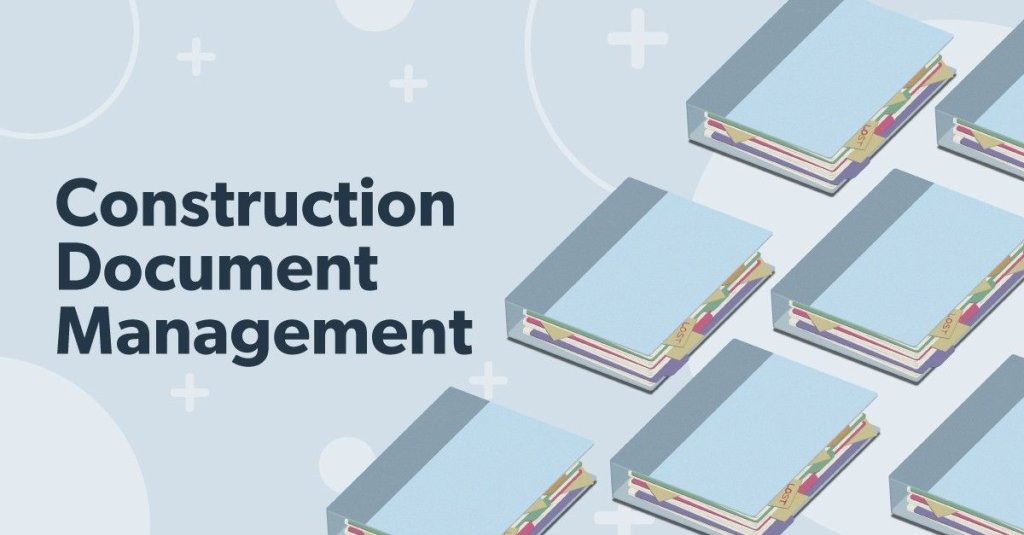Optimizing Project Partnership: Designer's Best Practices in Building And Construction File Management
In the intricate realm of architectural projects, the effective administration of construction documents stands as a keystone for success. Designers, with their thorough interest to detail and ingenious style options, are tasked with orchestrating a harmony of timelines, stakeholders, and resources. Nonetheless, amidst this intricacy lies a sixty-four-thousand-dollar question: exactly how can engineers simplify collaboration procedures to improve project results? By exploring key methods such as leveraging cloud-based systems, developing durable communication procedures, and guaranteeing information safety, designers can boost their paper administration methods to new elevations.
Leveraging Cloud-Based Systems
Leveraging cloud-based platforms is an essential technique for modern-day architects in enhancing building and construction record management processes. By transitioning from typical paper-based systems to cloud services, architects can improve collaboration, boost document availability, and boost overall job efficiency. Cloud-based platforms use designers the capacity to shop, share, and upgrade building and construction documents in real-time, ensuring that all staff member have accessibility to the most existing details regardless of their location. This ease of access advertises smooth communication and sychronisation amongst job stakeholders, causing fewer errors and delays in the building procedure.
In addition, cloud-based platforms give a secure atmosphere for saving delicate project information, using encryption, routine backups, and customer authorization settings to safeguard information honesty. Designers can also benefit from the scalability of cloud options, enabling them to change storage capability and capability based upon job needs. In general, leveraging cloud-based systems equips engineers to enhance their building and construction paper monitoring procedures, driving higher partnership, performance, and success in their projects.
Carrying Out Variation Control Solution
Having developed the advantages of cloud-based systems in building record management, engineers can now enhance their document control processes by carrying out Version Control Equipment. Version Control Solution (VCS) are necessary devices that track modifications in files, guaranteeing that employee are constantly dealing with the most up to date and most accurate information. By applying VCS, architects can preserve a central repository where all task files are kept, enabling smooth collaboration while decreasing the risk of mistakes and variation conflicts.
This feature is especially important in building projects where layout versions and modifications are typical. This transparency not just enhances accountability however likewise aids in solving disagreements or disparities that might develop during the project lifecycle.
Developing Interaction Procedures
To guarantee effective and reliable project sychronisation, engineers must establish clear and durable interaction methods within their building file administration procedures. This platform can be a task management software program, e-mail strings, or you can try here cloud-based storage space remedies.
In addition, communication methods should additionally include guidelines on how to deal with disputes, adjustment orders, and immediate concerns that may develop during the project lifecycle. Establishing a structured approach to communication makes sure that all stakeholders are on the same page, advertises openness, and inevitably adds to the successful completion of the building project.
Making Use Of BIM Software Application for Control
BIM software program plays a pivotal role in enhancing control amongst project employee in the building industry. Structure Details Modeling (BIM) facilitates collaboration by giving a central platform where engineers, engineers, service providers, and other stakeholders can function together in a worked with manner. With BIM software program, project participants can access and update a shared model which contains comprehensive details concerning the structure layout, building elements, and project routines.

In addition, BIM software program enables real-time collaboration and communication among group members, regardless of their physical area. Through cloud-based BIM platforms, task stakeholders can access the most current project details, track changes, and make educated choices promptly. Overall, leveraging BIM software program for coordination boosts task effectiveness, performance, and ultimately causes successful job results.
Ensuring Information Safety and Conformity
In the realm of building record management, guarding information stability and ensuring regulative conformity are paramount factors to consider for architects and other job stakeholders. Designers should apply robust safety and security measures to protect sensitive task info from unapproved accessibility or breaches.

Final Thought
Finally, architects can optimize job partnership in construction file administration by leveraging cloud-based platforms, executing variation control systems, establishing interaction methods, making use of BIM software for coordination, and guaranteeing information safety and security and conformity. These best practices assist simplify the building and construction procedure, boost communication amongst job stakeholders, and boost effectiveness in task distribution. By complying with these standards, engineers can efficiently take care of building records and help with successful task outcomes.
Via BIM software application, project participants can access and update a common design that contains comprehensive information about the structure layout, construction components, and task schedules.
Via cloud-based BIM systems, project stakeholders can access the most current job details, track adjustments, and make educated choices immediately - construction document management. Overall, leveraging BIM software application for control enhances task effectiveness, performance, and ultimately leads to successful task outcomes
In verdict, architects can maximize project cooperation in construction file monitoring by leveraging cloud-based platforms, implementing version control systems, establishing communication methods, using BIM software program for sychronisation, and making certain data safety and security and compliance. These ideal practices aid enhance the construction procedure, enhance interaction among task stakeholders, and boost efficiency in job shipment.